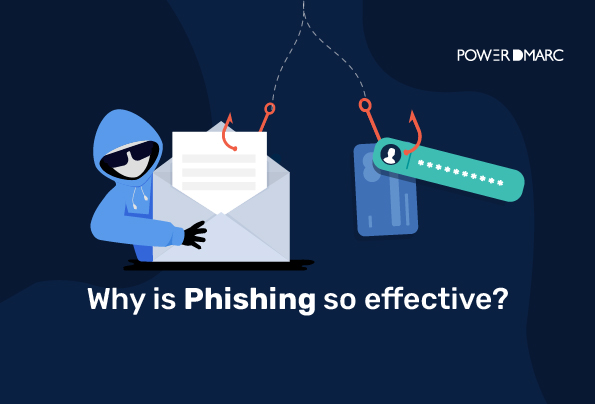Phishing is an effective and dangerous cybercrime because it relies on people’s inherent trust in the internet. The idea that criminals would be able to fool you into giving up private information is hard for most people to believe, which makes it easy for even well-meaning people to fall victim to a phishing attack.
Key Factors that make Phishing an effective and dangerous cybercrime
Phishing is a common cybercrime that can be easily committed and hard to detect. Although phishing has been around for decades, it’s still a major threat to both businesses and individuals.
- Phishing is an effective cyber crime because it’s so simple. You send an email, or post something on social media, that looks like it’s from a legitimate company or person. It asks you to log in to your account and change your password or enter some other information—like credit card numbers or passwords for other accounts you have.
- The reason why phishing is so effective is that the perpetrators can target specific individuals or groups of people. They also have a wide variety of methods they can use to trick their victims into giving up their information.
For example, they may send an email that appears to be from a legitimate company (like Google) asking you to log into your account on their website. If you fall for this trick, your username and password are stolen!
- Another reason why phishing is such an effective crime is that there are no actual laws against it yet—it’s just considered online harassment or fraud at this point in time. This means that victims have no legal recourse when someone steals their personal information through phishing scams like the ones mentioned above!
- There is not much awareness regarding Phishing even in recent years. Most corporate employees, domain owners and individuals have only fleetingly heard the term “phishing” without a proper understanding of how it is executed and what they can do to protect themselves against it.
- Part of the reason is that phishing is so easy to execute. All you need is a computer and some basic knowledge of how to use it. That makes phishings cheap and easy to pull off—and that’s why they’re so dangerous.
- The other part is that human beings are really good at being tricked. Our brains are built to believe what our eyes tell us, and phishers have learned how to exploit this tendency in order to get people to act against their own interests.
That’s why even though we know better than to open an email from someone we don’t know or click on links in emails sent by people we don’t know, we still do it sometimes—because our brains want us to believe that these things are safe!
How to detect Phishing Attempts?
Make sure the email sent to you is genuine
If you’re not sure whether it’s real or not, there are a few things you can do to check. First, if the person who sent it is someone you know (like your boss), just call them up and ask if they really sent it. If they say yes, then go ahead and do what they asked. But if they tell you no… well then, maybe something fishy is going on!
Second, look at the email address: does it look like an official address from the company? Often times these kinds of emails will be sent from an address that ends with “mailinator” or something similar—that means it isn’t actually from them!
Authenticate your messages
To keep the guesswork out, you can consider authenticating your email messages using reliable protocols like SPF, DKIM and especially, DMARC. Authentication can help domain owners prevent a wide range of cyber attacks including spoofing, phishing, ransomware and BEC.
Look for telling signs
- Look for misspellings, bad grammar, and other errors in the email. Most phishing emails will have at least one error in them because they are created by scammers who aren’t native English speakers.
- Look for links in the email. If the link directs you to a website that isn’t associated with your bank or online store, then it’s probably not safe to click on it.
- Verify any phone numbers that are listed on the email using a trusted source like Google Voice or Skype before calling them back—even if they seem legitimate! You can also call your bank directly without sharing any sensitive information over the phone if you’re suspicious of an email request.”
Read our detailed guide on Common Indicators of a Phishing Attempt.
How to avoid getting phished?
To avoid being scammed, follow these tips:
- Never click on phishing links in emails or text messages unless you know where they’re coming from (and if they ask for personal information).
- Look at the email address of the sender and compare it with their real email address (if they’ve given this out). If it doesn’t look right or there are spelling mistakes or other errors, don’t open it!
- Enforce your DMARC policy to p=reject (note that shifting to DMARC enforcement should be a gradual process, and it is always recommended to start with p=none)
- Educate your employees about email attack vectors and best practices by undergoing a free DMARC training.
Final Words
Not only do phishing attacks put your network at risk for data breaches and malware infections, but they also cost companies millions in lost revenue and reputational damage every year (according to IBM). The best way to prevent these attacks is through awareness, early detection and effective preventions.
- Rise in Tax Scams and IRS Email Impersonation Attacks During Tax Season - May 2, 2024
- Email Safety 101 to Fight Crypto Scams - April 30, 2024
- How to Find the Best DMARC Solution Provider for Your Business? - April 25, 2024
